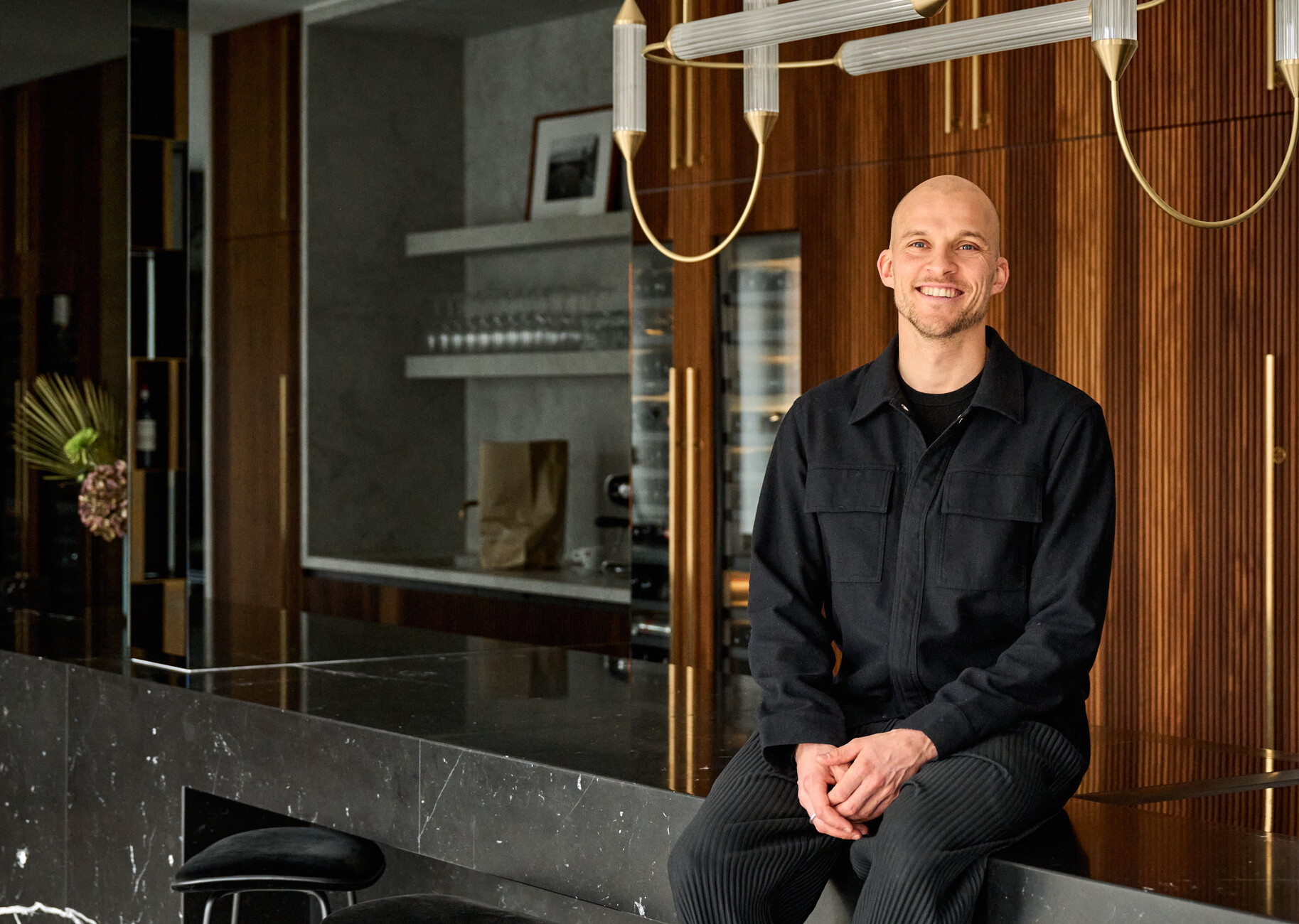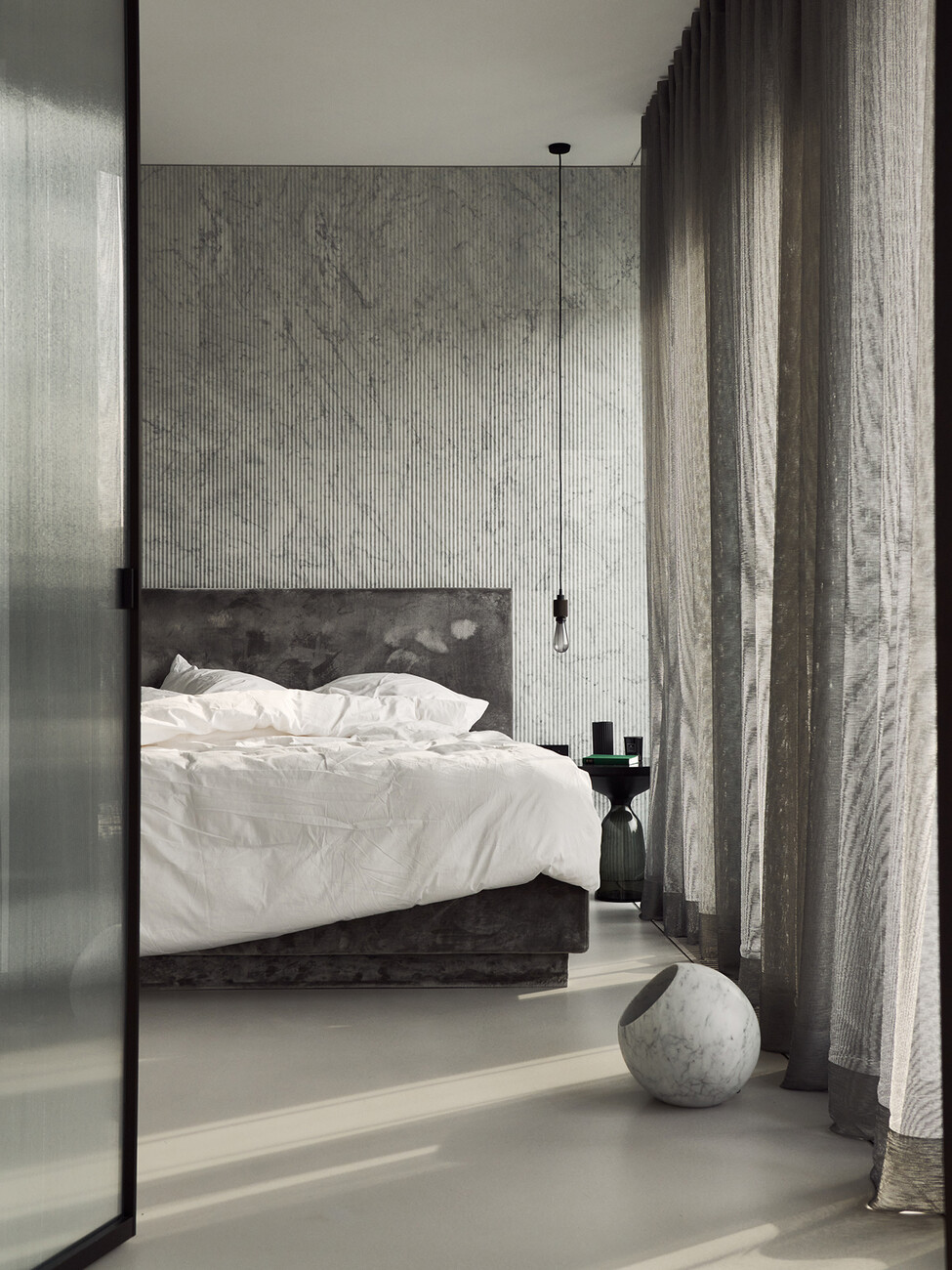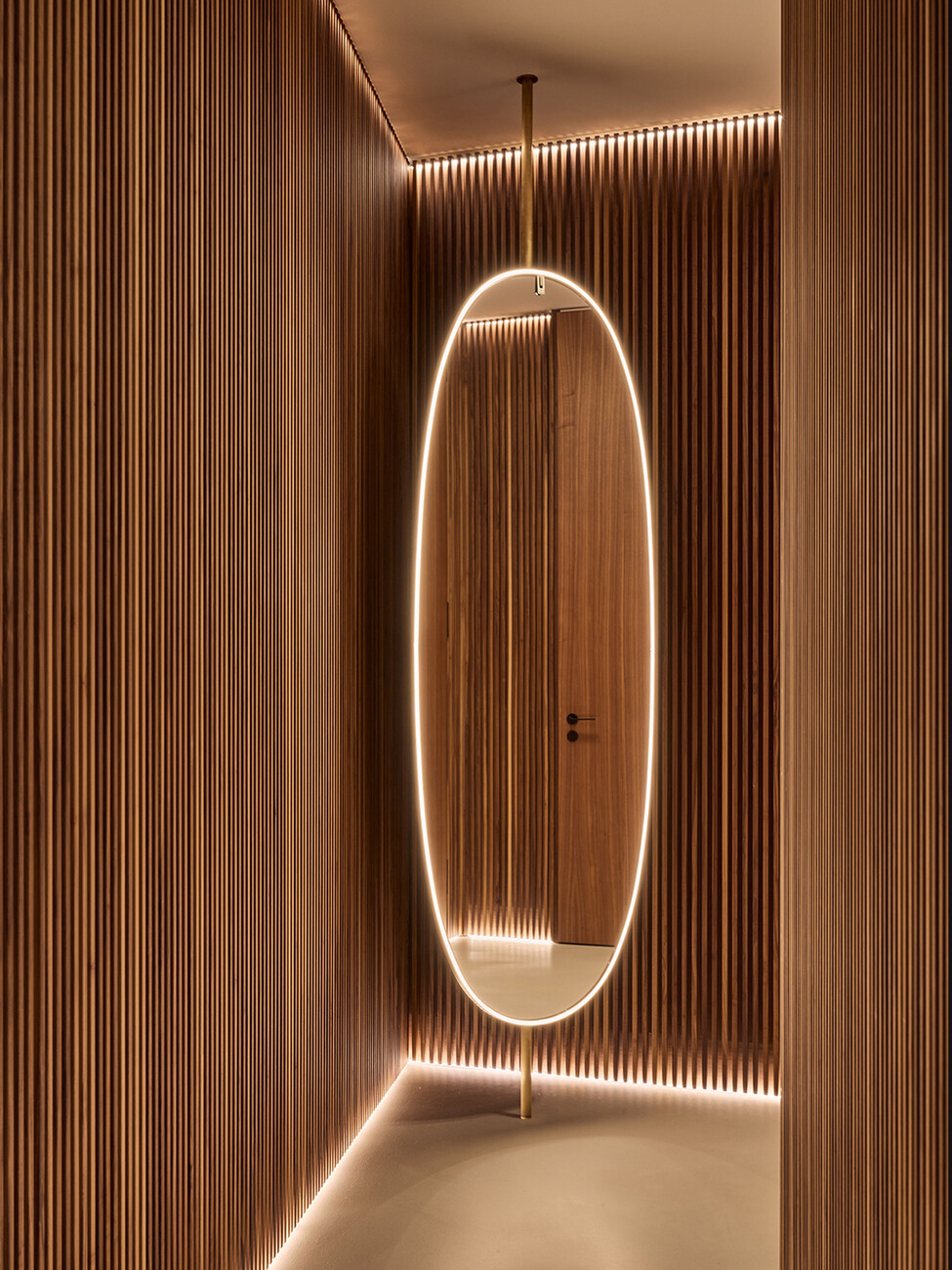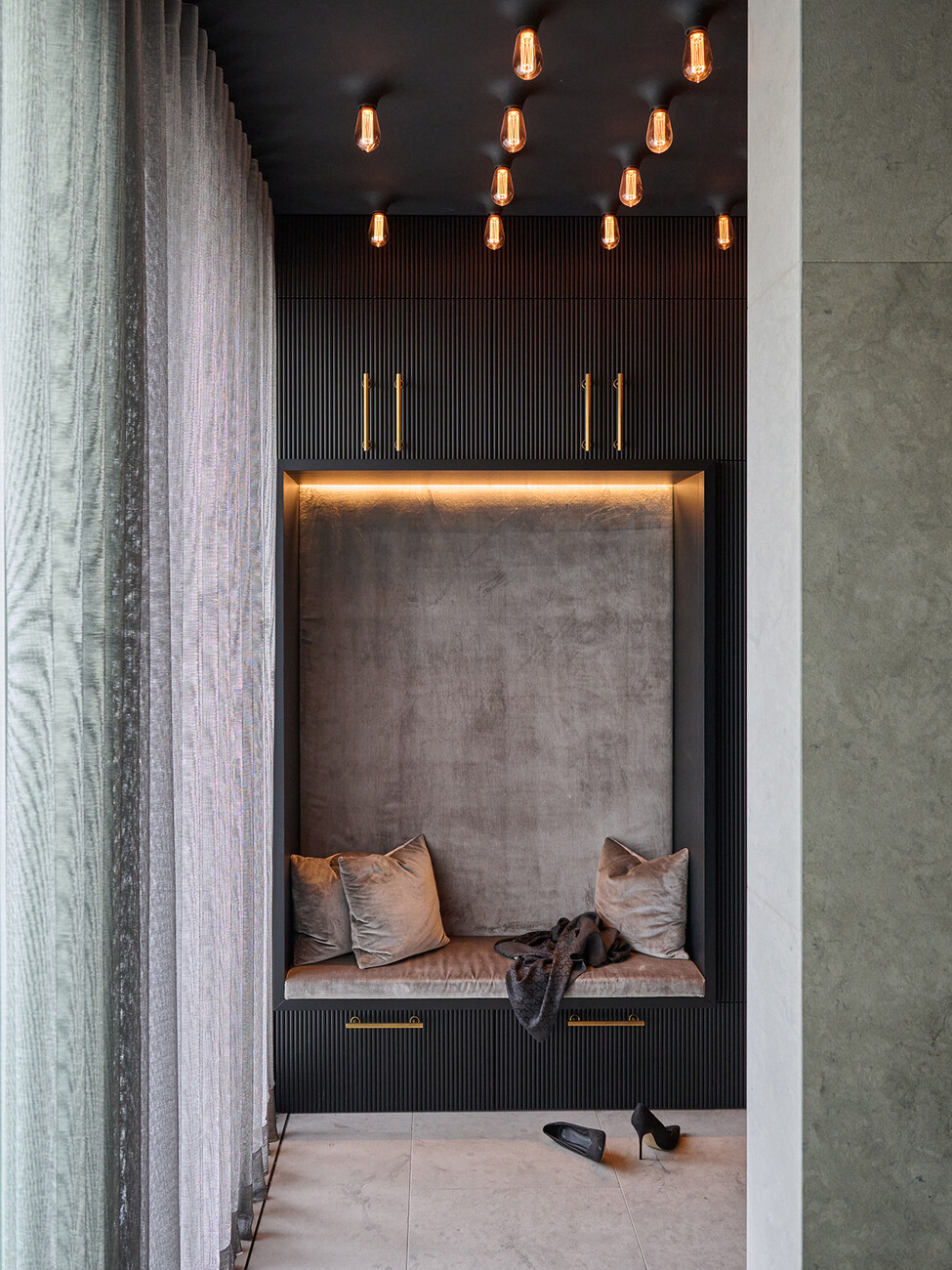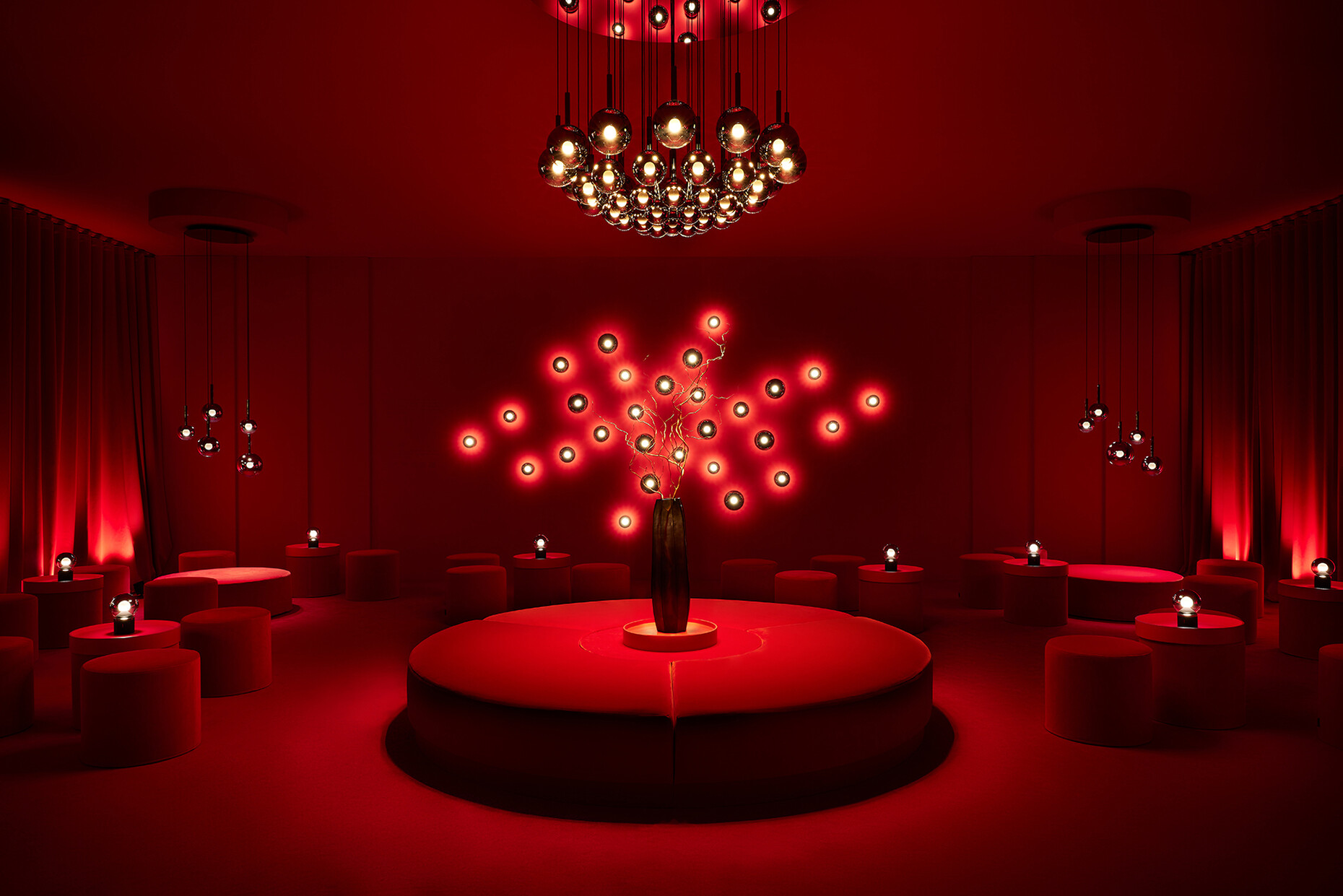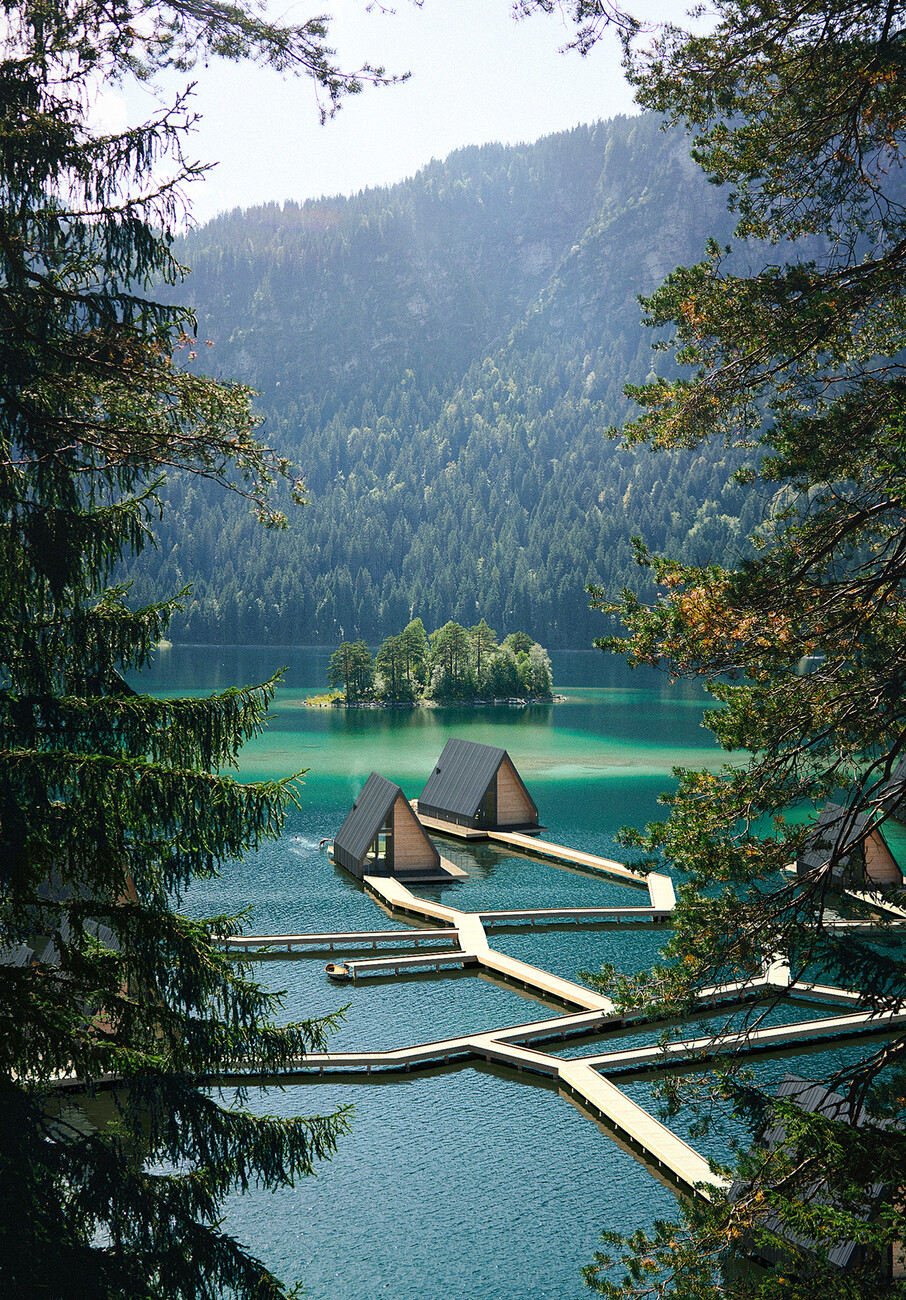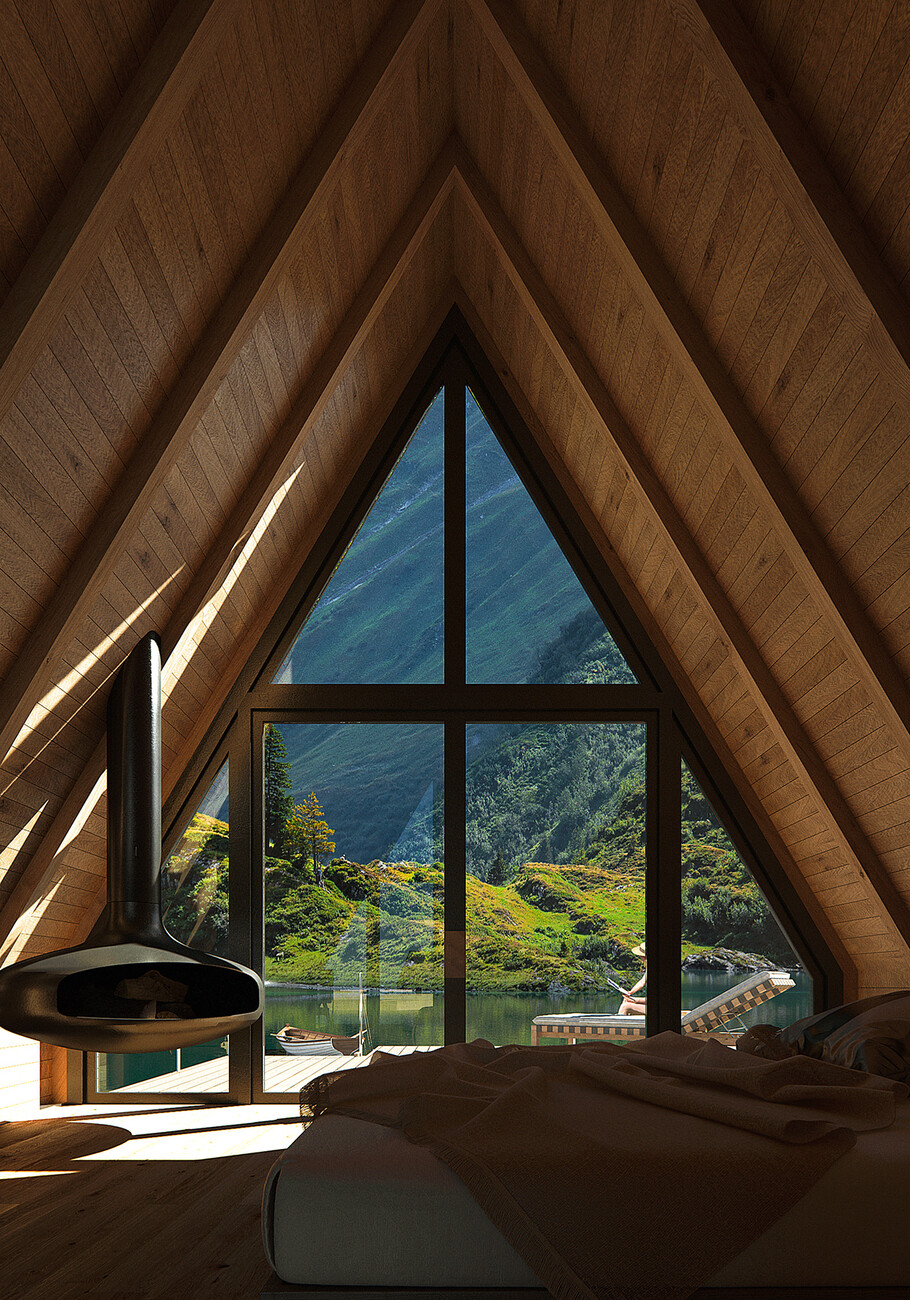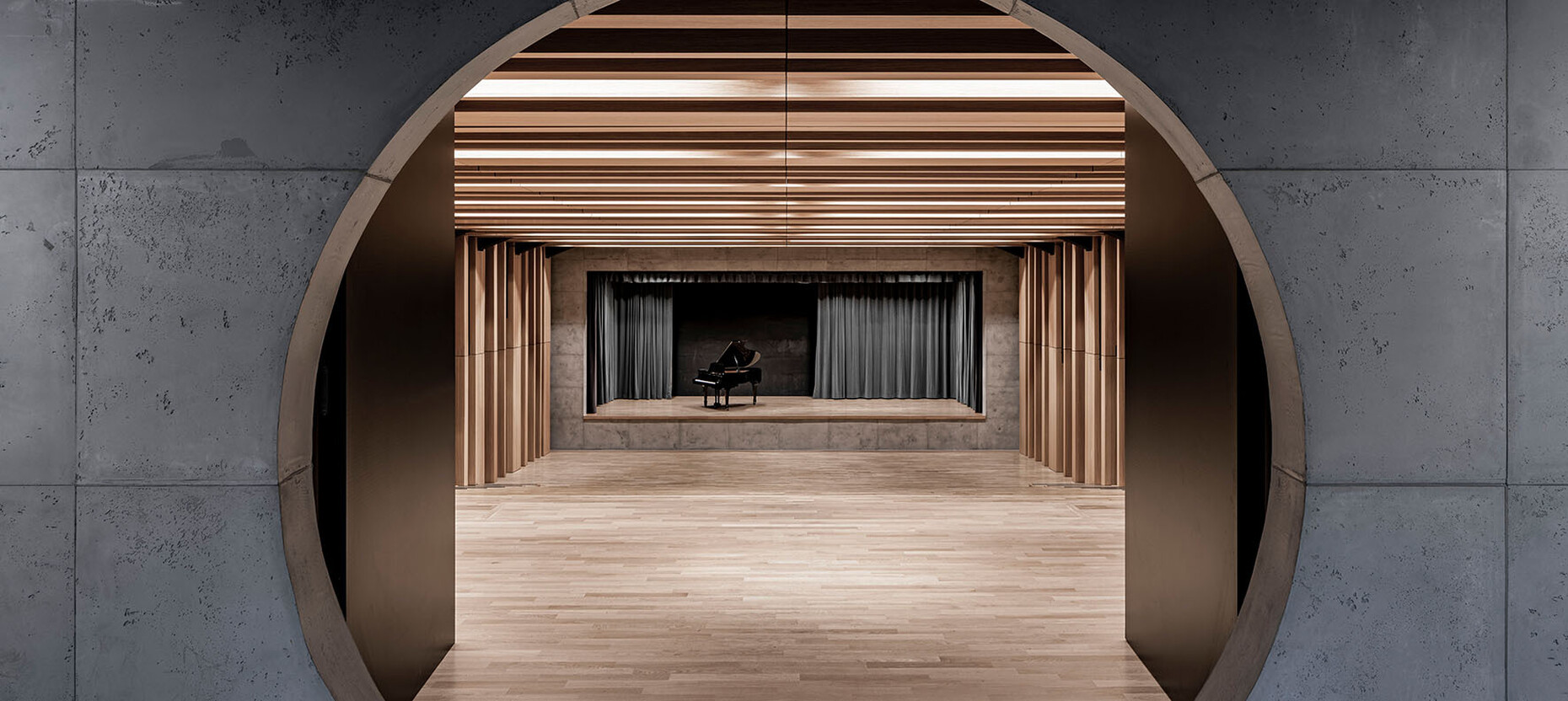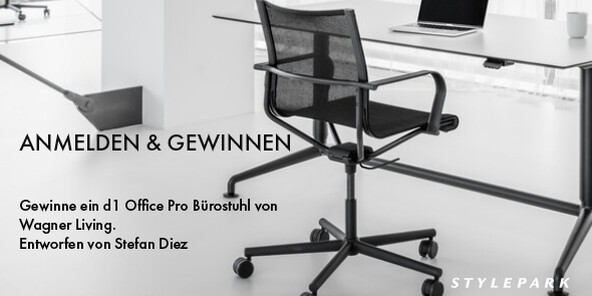In the mirror of time
David Kasparek: Mr Schützdeller, there is frequent criticism that architectural education neglects essential aspects of the profession. You studied in Munich and Venice, and then worked with Stephan Maria Lang. Did you feel adequately prepared for architectural practice?
Sebastian Schützdeller: I'm very critical of that – partly because I didn't feel sufficiently prepared. When you finish university, you've learned a lot about design and a little bit about technology, but you have no idea about the profession. Cost and space calculations, approval procedures, work planning, coordination with specialist planners and local authorities, or dealing with tradespeople on the construction site – none of this is taught at university. In particular, the subject of building owners and how to deal with them is not covered in the course. You gain a very good theoretical understanding of architecture, but that has little to do with preparing you for the profession.
What ideals did you encounter during your studies with regard to how architecture is created and how architects work?
Sebastian Schützdeller: The image of the successful architect that we often encounter and learn during our studies is that of a star: Norman Foster, Zaha Hadid, Bjarke Ingels. Although these are offices with hundreds of employees, everyone there follows the principle of a particular style and thus the individuality of one person. There is no question that great things have been created in these offices – but not by just one person, as is often portrayed to the outside world. I knew early on that I wanted to start my own business as soon as possible. Also because I wanted to do things differently.
The path you took is very traditional: an internship before starting your studies, working as a student trainee in an office during your training, then obtaining your chamber certification there. Was there a key moment that made you want to do things differently?
Sebastian Schützdeller: Working for Stephan Maria Lang in Munich was impressive on two levels. Firstly, because he is a gifted villa builder. His office produces very impressive designs that are realised to an incredibly high standard. Secondly, I quickly realised that I didn't always want to work as an employed architect in an office.
Why not?
Sebastian Schützdeller: There are so many good individuals and exciting things everywhere – I wanted to connect with that. That is definitely something I have learned from my extensive travels. I was lucky enough to spend a long time in Australia while I was at school, and after graduating, I was able to finance a trip around the world by doing odd jobs, so I spent eight months backpacking. I saw so many other things, speak a few languages, have friends in every country in the world and, since you asked me about a key experience, one evening I was sitting with a friend having dinner. I was 30 years old, already self-employed, had four or five employees, had already had to fire my first employee and had gained my first professional experience. Although I had a good team, I didn't want to continue like this for the next 35 years – in a backyard in Munich's Maxvorstadt district. My friend asked me, ‘What would you like people at the next table to say about you?’ And honestly, I didn't want them to recognise me, didn't want them to know who I was and what I did. What I wanted even back then was for them to talk about the office I had built – without knowing that I was behind it. I didn't want to be a personal brand as a successful architect, but rather an office that stood for something.
What did you do then, how did you actively change course, and what adjustments did you make?
Sebastian Schützdeller: First, I freed myself from the idea that the designs had to come from me. Architecture should be tailored to the client, based on their individuality, not mine. It would be completely presumptuous to say that I alone could design your house and all your friends' houses perfectly for all of them. Because I didn't want to create egocentric architecture, I decided to take on projects that were as diverse as possible – with people who were as different as possible.
And did that work?
Sebastian Schützdeller: Not at first (laughs). The higher goal was to establish an office that could develop different projects tailored to an individual or a company. To achieve that, you need to be highly creative. High creativity comes from different people. I experienced the diversity of people on my travels to different places and therefore thought it would be right to build an international team in Munich. Then I would have influences from all over the world in the office, and that should work, right? The different perspectives would be reflected in our joint work. We were an office in Munich with six to eight people from Spain, Italy and the UK. But the diversity I had hoped for didn't materialise.
How so?
Sebastian Schützdeller: It didn't create the friction I wanted. Today, it seems clear to me: Italians who come to Germany to live in Munich are more German than any German. They turn their backs on the chaos in Italy and embrace order, cleanliness, rules and laws. They want to live exactly like that, which is why they decided to leave Italy behind, along with everything that goes with it: riding a Vespa without a helmet, arriving at the office at quarter past nine with a cigarette in their mouth, going shopping with their mum on Saturdays and cooking pasta with their grandmother on Sundays. So I decided to move our office to where the people are, with the lifestyle and mindset we want for our projects. We have to gather that where it is. I like Italy, I speak Italian, Italians are known for being good at design and have a good education in architectural history, so why not go to Italy? Milan was too far north for me, too close to Munich, so I flew to Rome with my Roman colleague Maria, rented an office, hired two people, and then we just gave it a try.
Did that work?
Sebastian Schützdeller: Yes, indeed. Because there were people who sometimes disagreed with me, with whom I could really spar. And that was exactly the friction I wanted.
So instead of the backyard in Maxvorstadt, it's now ‘the eternal city’. Is this still a traditional office, or what does something like this look like today?
Sebastian Schützdeller: It is an international network of small offices that can work on the same projects in a decentralised manner.
How does this work in practice in project work?
Sebastian Schützdeller: When a project comes in and Oscar from Rome, Antonio from Mallorca and Michael from Munich are the best fit for it based on their history, personality and way of working, the three of them work on it as a team – but from different locations, which is no problem at all these days. This creates an architecture that does not reflect me personally, but is created for the client from within the network.
What kind of projects are created in this way?
Sebastian Schützdeller: We get to work on a wide variety of projects. In Munich, we are currently planning a 4,000-square-metre hotel in a corner building, while at the same time working on an 80-square-metre apartment in Palma de Mallorca, the brand identity for Occhio for Milan Design Week at Villa Necchi in Milan, and an office building for a company in Munich. The projects all look different and are being handled by different teams.
Are we talking about a network of freelancers or is it a structure with permanent employees at different office locations?
Sebastian Schützdeller: All employees are permanent staff, and each office location is set up as an independent limited company managed by a managing director.
You mentioned Italian people who ride Vespas, still live with their mothers and cook pasta with their grandmothers. Isn't that just a big stereotype?
Sebastian Schützdeller: Historically speaking, and in terms of our respective educational backgrounds, we are all shaped differently. That has nothing to do with stereotypes. Someone who grows up in a Scandinavian school system, in one of the richest countries in the world, with a sovereign wealth fund that secures pensions, where children's education is a high priority, simply thinks differently from someone who grows up in a city of four million in southern Italy, in an apartment in a multi-family house with their grandmother, mother and three siblings, and lives at home longer than other Europeans. That's not a cliché, that's the way it is. And that's not a judgement either. It's interesting when the guy from Copenhagen and the guy from Rome, who have both moved to Munich, realise that they think alike because they have both left their families behind and moved to Munich for certain reasons. But when I visit the guy from Copenhagen, who moved out of his parents' house at 16, I experience something different than when I visit the guy from Rome, who lives next door to his parents. That's not pandering to stereotypes, it's drawing on the diversity we have in Europe.
Why is it important to you to experience these different ways of thinking and living with permanent employees rather than freelancers?
Sebastian Schützdeller: We were just in Rome with the team. It was great because there's a real sense of community: we're all part of the same gang (laughs). I belong to the Munich team just as much as they belong to the Mallorca team and the Mallorca team belongs to the Rome team. We all wear the same jumper, we all work towards the same vision, we all belong to the same brand. This sense of community is really, really important. This level of identification would be impossible with a team of freelancers. For what we do, you have to identify with who we are. For us, it's about you being a good fit for our customers. That's what the brand stands for.
Where does that leave the individuality of employees, what they think, what they consider right or wrong?
Sebastian Schützdeller: Every person in the team and what they think is important, of course. But they have to understand that they can't be used in every project. The team has to suit the client, not the other way around. Each project creates a different sense of belonging – it's not always the same feeling you get in the office. For example, if I realise that the office building in Munich isn't right for me in Mallorca, but it suits Michael in Munich, then I'm happy for Michael – after all, it's a great project. Something else suits me better in Milan, which is why I'm now working on that project. That's the added value of cohesion and cultural creativity within a company.
This means that mirror. now operates sites in Munich, Rome and Mallorca. How many people work at each location, and are there plans for further sites?
Sebastian Schützdeller: We currently have five in Munich, three in Rome, and three in Mallorca, including myself – we always have between ten and 15 people in total. If the crisis in the construction industry hadn't happened in recent years, we would have opened another location in Copenhagen at the beginning of this year. That's the next goal. And then I could imagine expanding into Eastern Europe. Not so much because I want to build in Belgrade, for example, but because I'm interested in what the team from Belgrade would build with the team from Munich in London.
This also applies to the fundamental architectural theme of ‘place.’ The genius loci is an integral part of both theory and practice. However, new construction projects in Madrid that surprisingly often resemble those in Copenhagen show that the supposed spirit that blows through a place is usually not that strong. However, in view of various issues facing us today, there are certainly good reasons to take the topic of place more seriously again. How well can this be done when a team of employees in Bucharest, Mallorca and Rome are working on a project in London?
Sebastian Schützdeller: There are fundamental conditions within which we operate. Design guidelines, existing buildings, development plans, legislation. We don't need to believe that we can do whatever we want in a listed building in Milan. So there is a certain framework that we cannot change, regardless of where we work. I think that's good. And then there is a second point that is always forgotten in this discussion about the genius loci. Who shapes a place? It's people, of course. We live in Europe, we live in a world that is 100 percent networked and globalised, where I can travel from Munich to any city in Europe in two hours, where – at least for now, thank God – there are free trade agreements and we can cross borders. We live in a world where children go to boarding school in England at the age of 14, study in the USA at 20, build a hospital in Africa at 25 and come back to Munich at 30 to live and work there with all their new impressions. In our society, travelling is no problem. The place where we find ourselves is also shaped by all the people who are there at any given time.
That is the perspective of European Sebastian Schützdeller. People from Sudan, Myanmar or Ecuador do not have these freedoms in the same way. If I understand you correctly, however, you want to point out that it is not only the built environment that shapes a place...
Sebastian Schützdeller: I wonder whether every building is more important for a place than the people who work there, live there and pass by it every day. Are we perhaps placing too much importance on such buildings compared to other social issues? I grew up in Bavaria and I like the architecture there, but that doesn't mean that every house in Bavaria needs a wooden façade.
Nevertheless, there are reasons why certain materials were preferred in certain areas and why certain types and construction methods became established. And these reasons always have something to do with people.
Sebastian Schützdeller: One could, of course, ask whether this is being discussed sufficiently. It should not only be about discussing the location, but also about understanding that the builders help shape the location – just as the surroundings in which the building is located do. Tastes vary greatly, and what we find ugly, others find beautiful. Our concept is not opposed to the location. It opens up an additional discussion that leads to looking at more things than just whether a house fits into its surroundings. Of course, the house has to fit where it stands. But it's also about the people who make the place a living place belonging to it. An international team doesn't detract from that. Just because I come from Munich doesn't mean I can't work in Mallorca in a way that is sensitive to the location.
At the beginning, you mentioned that you didn't learn enough about the practical aspects of everyday life in an architecture firm. How is mirror. organised?
Sebastian Schützdeller: In the organisational chart, you can imagine a dome that unites all locations, holds the satellites together and enables different constellations of cooperation depending on the project. This is where acquisition, communication and conception take place in the first service phase. Each location then has its own managing director, who becomes the point of contact for clients from service phase 2 onwards and leads the team of architects. This means that our work is no longer person-based, but position-based. It is an entrepreneurial structure. We now adhere to these communication channels from the outset; two years ago, I used to get called even more often (laughs). Today, I don't have any fixed appointments for projects that I'm not involved in myself.
Isn't that ultimately a shift in creative output? You have criticised – rightly, in my opinion – the focus on supposed genius in architecture. Architecture is a collective effort. However, it seems to me that although you no longer presume to know which spaces are right for your clients, you do believe you know which team is right to design the right spaces for them. In the film ‘Money Ball’, there is a baseball manager, played by Brad Pitt, who no longer selects his team based on gut feeling, but purely on quantifiable parameters such as running performance, batting or catching rates. This continues to play an increasingly important role in the recruitment of sports teams today. Don't your descriptions ultimately mean that you have to put your teams together based on such a performance matrix rather than on your personal idea of which team is the most suitable? Or is there not always a certain personal touch in the field of culture – and indeed in building culture – a spark that has to jump from one person to another so that the third person in the group catches fire and creativity emerges?
Sebastian Schützdeller: I think you have to differentiate between the current situation and the vision we have. We are on a journey, not at a destination. Due to the nature of our profession, this journey cannot be completed as quickly as I would like. Architecture is slow. On top of that, we earn far too little money. The speed at which my vision can be realised is closely linked to financial resources. At the end of the day, we are underpaid and an unfriendly environment for investors. This means that, unlike other industries, we do not receive external funding to accelerate the development of a company with such a vision. We have to earn the money ourselves. Of course, it's still the case today that I try to put together the right team and introduce it to the clients. As you say, I believe that this or that team is a good fit for the respective clients. This naturally allows us to steer the constellation in a certain way. Anything else would be a lie. Unlike the old-school, egocentric architect, I don't claim to be able to do everything to clients, but rather select the team that can do the most for them. The architects who work for us are not egocentric, but want to implement the project correctly for the clients – regardless of who they are. When I, Sebastian, say that the team consists of Shahab and Otto, then I assign Shahab and Otto to this project, but Shahab and Otto are not egocentric, and at the same time I take myself out of the equation. Then it's no longer about me, but about the process.
Does the client understand that although you spoke with them at the beginning, you are no longer involved in the process?
Sebastian Schützdeller: More and more. Of course, it's an educational process for us and for our customers. As soon as I meet someone, I explain the concept to them, and based on that explanation, they come to us. This means that the customers who come to us not only know what they're getting into, but also want exactly that.
Sebastian Schützdeller studied architecture at the Technical University of Munich and in Venice from 2009 to 2014 and worked at Stephan Maria Lang's office during his studies. After working there and at a trade fair and shopfitting company, he initially set up his own business in Munich in 2017 and now lives and works in Mallorca.
